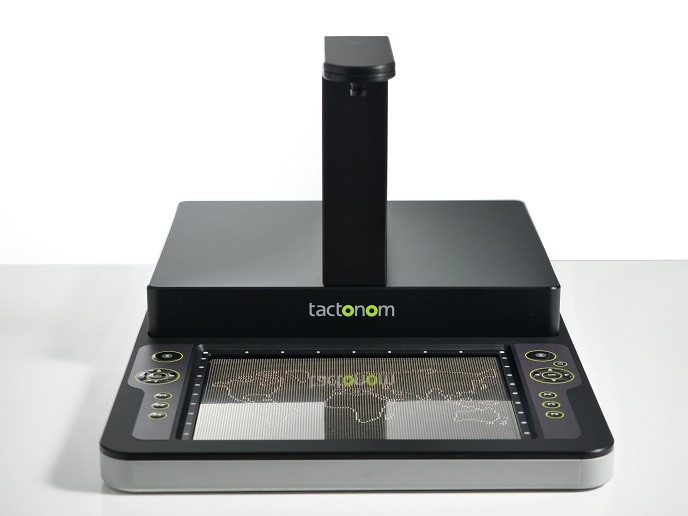Visually impaired unemployment rate set to reduce in Europe
Without the avail of suitable output technologies, many of those who are visually impaired and able to work, cannot. The Tactonom(opens in new window) project aims to change this by increasing the autonomy and productivity of visually impaired people in the work environment. “This can be achieved by introducing a tool for blind people, enabling them access to any information without the help of others,” explains project coordinator and general manager of Inventivio(opens in new window) Klaus-Peter Hars. Through this tool, the project endeavours to reduce the unemployment rate by 10 % by 2028.
The technology
In the last 6 years Inventivio has been developing a tactile graphics display called Tactonom. This device can hold more than 10 500 tactile points, enabling blind people to read any information with their fingertips. It translates screen content automatically into Braille text and tactile graphics. The software platform is open and external software developers can create their own apps. “For the first time blind people will be able to access maps, images, graphs, forms, floor plans, tables, icons and any other graphic information,” enthuses Hars. The coordinator adds: “The device can support blind people in many aspects. Interactive maps facilitate mobility, learning graphics enrich education, being able to read tables helps in the work environment and barrierless access to the internet improves participation in society.”
The challenge of market dynamics
The Tactonom device is in its final stages of development. Prior to introducing the technology to the market, the project conducted a market survey in Austria, France, Switzerland and the United Kingdom. “We wanted to understand the market in terms of its size, dynamics, target groups, as well as the distribution landscape, the reimbursement policies and the competitive environment,” notes Hars. From the market survey, the project discovered that all the analysed markets have very different market dynamics in terms of reimbursement policies. These policies are an important factor in the medical device industry as they define to which extent and under what circumstances the assistive technology is paid for by society. In most European countries, assistive technologies for the blind are subsidised. However, the reimbursement is organised differently in each country. The reimbursement, therefore, represents a market barrier, because without support from financing bodies, a technology, even if it enables a significantly higher degree of personal independence like the Tactonom device, is hardly marketable. Hars adds: “We hope that the atomisation of the European healthcare market will one day be overcome. A harmonised market would be a great achievement for future innovation, cost efficiency and human well-being in Europe.” Until that day, Inventivio will address each of the markets by seeking the support of the different financing bodies prior to market entry. Regardless of this challenge, the project has developed actionable business plans for the four countries. The company is currently finalising the hardware of the Tactonom device and is investing heavily in the development of software, additional apps and features. Once the hardware is finalised and thoroughly tested, Inventivio will introduce the technology in Germany and in the following years across all European countries, giving the visually impaired the opportunity to work.







